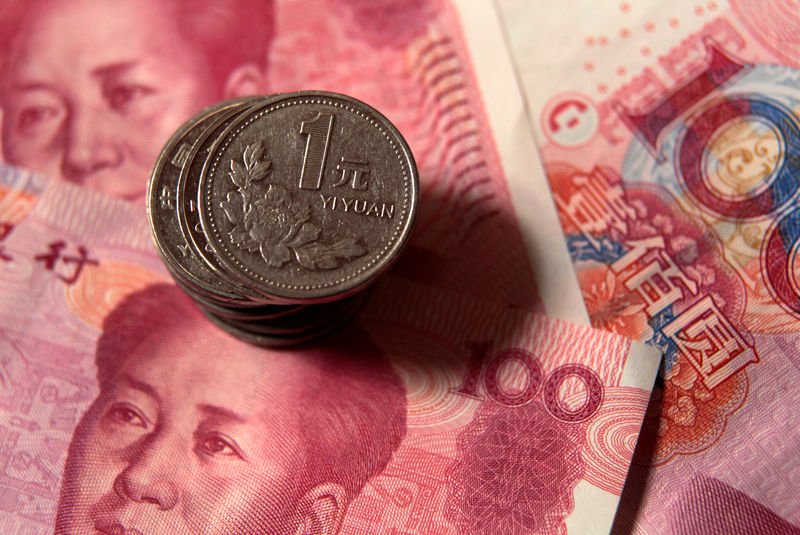(Bloomberg) -- An organization formed by key participants in China’s currency market urged banks to limit speculative foreign-exchange trading after the yuan climbed to a six-year high versus peers.
The China Foreign Exchange Committee -- founded under guidance from the central bank -- encouraged lenders to be risk-neutral when trading foreign exchange for themselves and for clients, according to people familiar with the matter. Banks were advised to better track their proprietary trading and improve risk management, the people said, citing a proposal made by core members of the organization that was circulated to members.
The move could be the latest sign that Beijing has grown uncomfortable with a rapid ascent in the yuan. The currency is the best performer in emerging markets this year as it benefits from robust exports and foreign investments in onshore bonds. Against a basket of trading partners, the yuan last week soared to the highest since 2015, when the authorities devalued the currency to aid growth.
The CFEC suggests banks conduct internal reviews when trading volumes at proprietary desks deviate significantly from the norm, the people said, asking not to be identified as the matter is private. Proprietary trading that is 50% higher than the level during the year-earlier quarter, or is more than 15 times the size of transactions done on behalf of clients could be considered abnormal, they said. Banks need to report their findings to the CFEC.
The proposal is targeted at more than 50 Chinese and overseas banks operating onshore, and covers over 90% of the country’s foreign-exchange market, the people said. It will not impact on liquidity in the currency market, they added.
The measures aim to strengthen standards for banks’ foreign-exchange businesses, especially proprietary desks, which tend to make speculative bets on one-way moves in currencies, the people said.
The People’s Bank of China last week asked financial institutions and enterprises to step up exchange-rate risk management and to refrain from making one-way bets on the yuan. Volatility of the currency may increase in future as overseas central banks have started adjusting monetary policy, the PBOC said in a statement, which was about a meeting held recently by the CFEC.
China should deepen market-oriented exchange-rate reform, which includes making the yuan rate more flexible, the PBOC reiterated in its third-quarter policy implementation report released late Friday.
While the PBOC has become more tolerant of yuan volatility in recent years, Beijing could grow uncomfortable if its rapid appreciation starts hurting exports and poses a risk to financial stability.
“At a time of slowing growth and a likely moderation in exports ahead, the strength of the yuan is likely becoming a growing concern,” said Mitul Kotecha, chief emerging markets Asia & Europe strategist at TD Securities in Singapore. This is yet another step toward limiting speculative pressure on the yuan following weaker fixings and the likely ongoing currency intervention, he added.
PBOC set its reference rate for the yuan at 6.3952 per dollar, weaker than the average estimate of 6.3931 in a Bloomberg survey of analysts and traders. That’s the third straight session of weaker-than-expected yuan fixing. Offshore yuan was little changed at 6.3906 as of 9:52 a.m. in Shanghai.
Reuters reported earlier that the CFEC proposed a plan to limit trading volumes at Chinese banks’ proprietary desks. The organization, founded in 2016, includes representatives from regulatory agencies and financial institutions.
CFEC said it wasn’t immediately ready to comment on the proposal when reached by phone Monday morning.
(Updates with yuan fixing in the 11th paragraph)
©2021 Bloomberg L.P.
